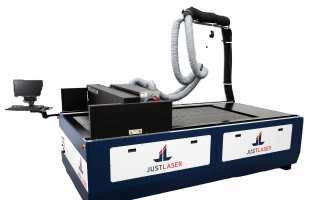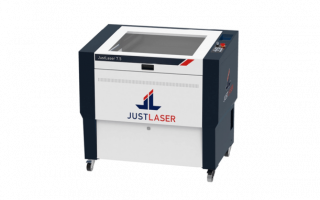Modern laser technology is often used for cutting plastic film for membrane keyboards made from polycarbonate, polyimide, polyethylene terephthalate or polyester. To cut technical films with a laser, you need a laser cutter and – ideally – a vacuum table. The laser ensures that cut edges are melted in a controlled way. This produces perfectly-sealed cut edges. The process is gentle and doesn’t involve touching the material, meaning that chipping of the film ink is avoided.
Even the smallest shapes minimal radii can be produced without any issues. Benefit from perfect results at a manageable investment volume with a laser cutter from JustLaser! In comparison to alternative technologies like punching or cutting plotters, lasers are considered the quicker and more accurate process for day-to-day work.


